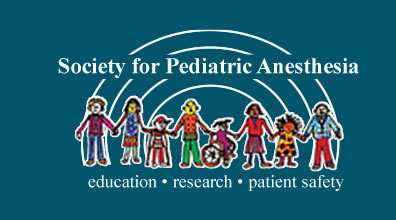2010 Update: American Heart Association Guidelines for Pediatric Resuscitation
 By Cheryl K. Gooden, MD, FAAP
By Cheryl K. Gooden, MD, FAAP
Mount Sinai Medical Center, New York
Every five years the American Heart Association (AHA) Guidelines for Cardiopulmonary Resuscitation (CPR) and Emergency Cardiovascular Care (ECC) undergo changes based on an extensive review of the resuscitation literature. The review process is conducted by international resuscitation experts and members of the AHA ECC committee and subcommittees. The information outlined below with regards to pediatric basic and advanced life support is to provide the reader with an overview of what are considered the most important changes presented in 2010. More detailed information on the guidelines can be obtained in Circulation in November 2010.
Here are the changes that you will want to know!
Pediatric Basic Life Support
- Change in CPR Sequence (C-A-B replaces A-B-C)
2010 – Begin CPR for infants and children with chest compressions instead of rescue breaths. Start CPR with 30 compressions (one rescuer) or 15 compressions (two healthcare providers) as opposed to with two rescue breaths.
- Chest Compression Depth
2010 – The appropriate depth for chest compressions should be at least one third of the anterior-posterior diameter of the chest. This is equivalent to approximately 1½ inches (4 cm) for infants and 2 inches (5 cm) for children.
- Elimination of “Look, Listen, and Feel for Breathing”
2010 – ‘Look, listen, and feel” was eliminated from the sequence for assessment of breathing after opening the airway.
- Pulse Check Again De-emphasized
2010 – In the unresponsive infant or child who is not breathing or only gasping, the healthcare provider can take up to 10 seconds to attempt to feel for a pulse. If a pulse is not appreciated or uncertainty exists, then chest compressions should be initiated.
- Defibrillation and Use of the AED in Infants
2010 – For infants, a manual defibrillator is favored over an AED for the purpose of defibrillation. When a manual defibrillator is not available, an AED with a pediatric dose attenuator is most ideal for use. When neither is available, an AED without the pediatric dose attenuator can be used.
Pediatric Advanced Life Support
- Recommendations for Monitoring Exhaled CO2
2010 – Exhaled CO2 detection (colorimetry or capnography) is advised in addition to clinical assessment to confirm tracheal tube position for infants and children with a perfusing rhythm in all settings (prehospital, ER, ICU, OR, and ward) and during interhospital or intrahospital transport. Continuous monitoring, when available, can be beneficial during CPR to help determine the effectiveness of chest compressions.
- Defibrillation Energy Doses
2010 – For defibrillation, an initial dose of 2 to 4 J/kg is acceptable. For refractory VF, the dose may be increased. Subsequent doses should be at least 4 J/kg and higher doses not > 10 J/kg, or the adult maximum dose, may be considered.
- Limiting Oxygen to Normal Levels After Resuscitation
2010 – The arterial oxyhemoglobin saturation should be monitored following the return of circulation. The goal is to titrate the FiO2 concentration to maintain an arterial oxyhemoglobin saturation ≥ 94%.
- Resuscitation of Infants and Children with Congenital Heart Disease
2010 – Resuscitation measures have been included for management of cardiac arrest in infants and children with single-ventricle anatomy, Fontan or hemi-Fontan / bidirectional Glenn physiology, and pulmonary hypertension.
- Management of Tachycardia
2010 – Wide-complex tachycardia exists when the QRS width is > 0.09 seconds.
- Medications During Cardiac Arrest and Shock
2010 – The routine use of calcium during pediatric cardiopulmonary arrest is not recommended except in the presence of documented hypocalcemia, calcium channel blocker overdose, hypermagnesemia, or hyperkalemia. In the presence of septic shock, etomidate is not recommended for routine use in pediatric patients.
- Post-Cardiac Arrest Care
2010 – Therapeutic hypothermia (32° C to 34° C) may provide benefit for adolescents who remain comatose after resuscitation following sudden witnessed out-of-hospital VF cardiac arrest. Therapeutic hypothermia may also play a role for infants and children remaining comatose following resuscitation from cardiac arrest.
- Evaluation of Sudden Cardiac Death Victims
2010 – Past medical and family history, as well as review of old ECGs should be obtained in the presence of sudden, unexplained cardiac death in a child or young adult. In addition, and when possible, tissue from the patient should be analyzed for the presence of channelopathy.
The underlying goal of all of these changes in 2010 is the continued effort to administer early and high-quality CPR to pediatric patients in cardiac arrest.


 Click
Click